Faster warming in the Arctic will result in a global temperature rise of 2° being reached 8 years earlier than if the region had warmed at the global average, UCL researchers have found. The Arctic is currently warming almost 4 times faster than the global average.
A new study published in the journal Earth System Dynamics explained how the research team created alternative climate change projections that did not see rapid warming in the Arctic. They then compared temperatures in this hypothetical world to temperatures in “real world” models and examined the timing of the critical Paris Agreement thresholds of 1.5° and 2° being breached. They found that models without rapid warming in the Arctic passed thresholds 5 and 8 years later, respectively, than their “real-world” projection dates of 2031 and 2051.
The goal of the Paris Agreement, an international treaty, is to maintain average global temperatures “well below 2° above pre-industrial levels” and to continue efforts “to limit temperature rise to 1.5°.” By now, the Arctic is thought to have warmed 2.7° since pre-industrial times, and this warming is thought to have accelerated since the start of the 21st century.
They also found that disproportionately rapid warming in the Arctic has added disproportionately more uncertainty to forecasts, as variations in model forecasts are greater for the region than for the rest of the planet. The study does not attempt to quantify how Arctic warming affects the rest of the world, such as through retreating sea ice that helps keep the planet cool, but instead estimates the direct contribution of Arctic warming to global temperature increases.
The warmest Arctic summer on record was recorded in the Arctic in 2023
The warmest Arctic summer on record was recorded in the Arctic in 2023. The average air temperature was +6.4°, which was the highest since records began in 1900. This was reported by the US National Oceanic and Atmospheric Administration (NOAA). According to NOAA experts, this indicates an acceleration of climate change.
Sea ice extent continues to decline, and over the past 17 years the Arctic has recorded its 17 lowest sea ice extents on record. Sea ice extent this year was the sixth-highest on record since satellite records began in 1979, with much less older, thicker multi-year ice than in the 1980s.
Average sea surface temperatures in August 2023 were 5–7° higher than the August 1991–2020 averages in the Barents, Kara, Laptev and Beaufort Seas. Unusually cool August temperatures were observed in Baffin Bay, the Greenland Sea and parts of the Chukchi Sea. Average August sea surface temperatures show warming trends from 1982 to 2023 in August ice-free areas of the Arctic Ocean, with average sea surface temperatures increasing by nearly 0.5° per decade.
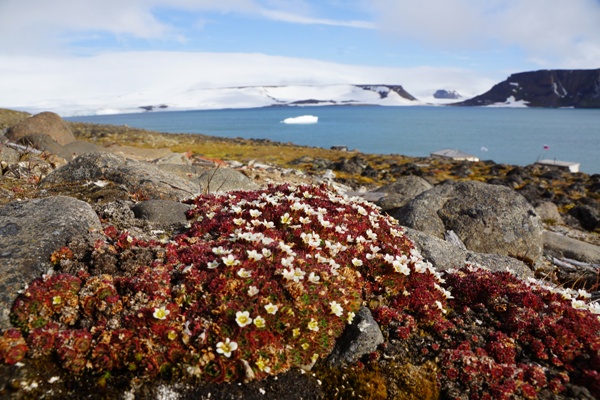
Regions of the Arctic Ocean, excluding the Canadian Archipelago, Chukchi Sea, and Beaufort Sea, continue to exhibit increased ocean phytoplankton blooms, or primary productivity, with the largest percentage increases in the Eurasian Arctic and Barents Sea. Snowpack in North America reached a record low in May 2023, while snow accumulation during the 2022–2023 winter was above average for both North America and Eurasia.
Heavy rainfall broke existing records in various locations across the Arctic, with some variations such as a dry summer in northern Canada leading to record wildfires. Precipitation in the Pan-Arctic was the sixth highest on record, continuing a trend toward a wetter Arctic. The amount of greenery in the tundra across the Arctic was the third highest in the 24-year satellite record, up slightly from 2022. In the Arctic, the trend continues for shrubs, willows and alders to increase in what was once tundra.
Global warming is increasing the gardening season in Yamal and making it possible to grow crops that previously did not take root in the conditions of the Far North. According to specialists from the Arctic Research Center, now in the Yamalo-Nenets Autonomous Okrug people can grow chamomile and fireweed, raspberries and strawberries, cherries, potatoes and peppers, parsley and dill.

— There are more opportunities to plant trees in populated areas, including planting flowers. This period can begin earlier, it lasts longer, those types of flowers and plants that did not take root before, they take root,” said the Scientific Center for Arctic Studies. Residents of the northern regions actively plant and strengthen shrubs and grow plants in open ground. Due to the poverty of local soils, the latter is mixed with purchased land. As Sever-Press reports, residents of the Yamal village of Soyakha (Seyakha) three years ago planted a vegetable garden on frozen soil, where they began to grow potatoes and radishes. They managed to reap a good harvest.
Carbon dioxide emissions in permafrost zones are equivalent to those of millions of vehicles
Over the millennia, as the world emerged from the last ice age, rising ocean waters in the Arctic continued to cover more and more permafrost, turning it into undersea permafrost. There are an estimated 965,000 square miles of underwater permafrost in the Arctic, one-fifth the amount of permafrost found on land.
International research collaboration is needed to address questions about the extent and current state of subsea permafrost and assess the potential release of greenhouse gases when it thaws. The average surface air temperature in the Arctic last year was the sixth highest since 1900, at −7°. The data shows that since 1940, average annual temperatures have increased by 0.25° per decade, and average summer temperatures have increased by 0.17° per decade.
As the Arctic warms, rising river levels in the region could release carbon dioxide emissions equivalent to millions of vehicles. Recent research from Dartmouth Research University in the US suggests that Arctic permafrost has a significant impact on the region’s river systems. This study, published in the Proceedings of the National Academy of Sciences, shows how permafrost—a dense layer of soil that remains frozen for at least two years—causes rivers in the Arctic to flow through narrower, shallower valleys than their normal counterparts. southern analogues.
The researchers set out to understand why Arctic watersheds—the total drainage area of a river and its associated waterways—tend to be smaller in area than watersheds in warmer climates. They studied depth, topography and soil conditions for more than 69,000 watersheds across the Northern Hemisphere – from 23°N latitude to the North Pole – using satellite and climate data. They measured the percentage of land occupied by each river’s channel network within its watershed, as well as the steepness of the river valleys.
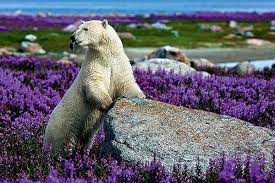
47% of the watersheds analyzed are formed by permafrost. Compared to temperate watersheds, their river valleys are deeper and steeper, and their channels occupy approximately 20% less of the surrounding landscape. The researchers report that these similarities persist despite any differences in glacial history, background terrain steepness, annual rainfall and other factors that would otherwise control the movement of water and land. Arctic watersheds are shaped by what they have in common: permafrost.
Permafrost’s ability to limit the flow of Arctic rivers also allows it to store enormous amounts of carbon in the frozen ground, according to the study. To estimate the amount of carbon that could be released from these watersheds due to climate change, the researchers combined the amount of carbon stored in permafrost with the soil erosion that could occur as the ground melts and erodes as Arctic rivers spread.
The gradual thawing of Arctic permafrost could release between 22 and 432 billion tons of carbon dioxide by 2100 if current greenhouse gas emissions are curbed, and up to 550 billion tons if they do not. The Arctic has been cold-adapted for so long that scientists have no idea how much or how quickly carbon will be released if permafrost melts at an accelerated rate, the researchers conclude.
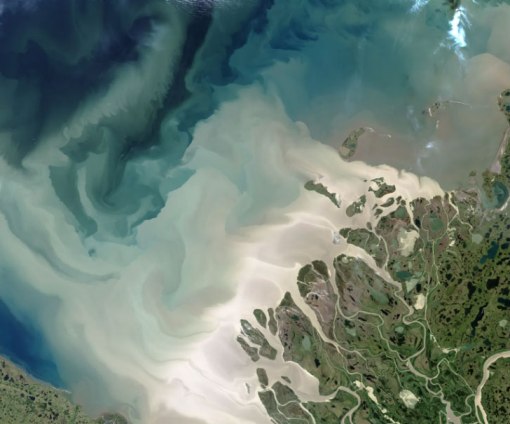
In this 2017 satellite image, sediment from Canada’s Mackenzie River flows into the Beaufort Sea in milky eddies. Scientists are studying how river flow leads to carbon dioxide emissions in this part of the Arctic Ocean. NASA Earth Observatory image by Jesse Allen using Landsat data from the USGS.
A study published earlier this year showed how scientists are using advanced computer modeling to study rivers like the Mackenzie, which drain into a region of the Arctic Ocean called the Beaufort Sea. Like many parts of the Arctic, the Mackenzie River and its delta have experienced significantly higher temperatures in all seasons in recent years, leading to further melting and thawing of waterways and landscapes.
In this swampy corner of Canada’s Northwest Territories, the continent’s second-largest river system ends its thousand-mile journey that begins just outside Alberta. Along the way, the river acts as a conveyor belt for mineral nutrients as well as organic and inorganic matter. This material flows into the Beaufort Sea as a soup of dissolved carbon and sediment. Some carbon is eventually released into the atmosphere through natural processes.
Scientists believe the southeastern Beaufort Sea is a weak to moderate CO2 sink, meaning it absorbs more greenhouse gases than it emits. But there was great uncertainty due to a lack of data from the distant region.
To fill this gap, the research team adapted a biogeochemical global ocean model called ECCO-Darwin, which was developed at NASA’s Jet Propulsion Laboratory in Southern California and the Massachusetts Institute of Technology in Cambridge. The model assimilates nearly all available ocean observations collected over more than two decades from marine and satellite instruments (e.g. sea level observations from the Jason series altimeters and ocean floor pressure from the GRACE and GRACE Follow-On missions).

Like a carbon conveyor belt, the Mackenzie River, seen here in 2007 by NASA’s Terra satellite, drains an area of nearly 700,000 square miles (1.8 million square kilometers) on its way north to the Arctic Ocean. Some of the carbon comes from thawing permafrost and peatlands. NASA/GSFC/METI/ERSDAC/JAROS and US/Japan ASTER Science Team
Scientists used the model to simulate the discharge of freshwater and the elements and compounds it carries, including carbon, nitrogen and silica, for nearly 20 years (from 2000 to 2019).
Researchers from France, the US and Canada found that river flow caused such intense degassing in the southeastern Beaufort Sea that it altered the carbon balance and resulted in a net CO2 release of 0.13 million metric tons per year, roughly equivalent to to the annual emissions of 28,000 gasoline-powered vehicles. CO2 emissions into the atmosphere varied seasonally, being more pronounced in warmer months when river flows were high and there was less sea ice to cover and trap the gas.
Since the 1970s, the Arctic has warmed at least three times faster than anywhere else on Earth, transforming its waters and ecosystems, scientists say. Some of these changes contribute to increased CO2 emissions in the region, while others lead to greater CO2 absorption. Scientists are tracking these big and seemingly small changes in the Arctic and beyond because our ocean waters remain a critical buffer against a changing climate, sequestering up to 48% of the carbon produced by burning fossil fuels.
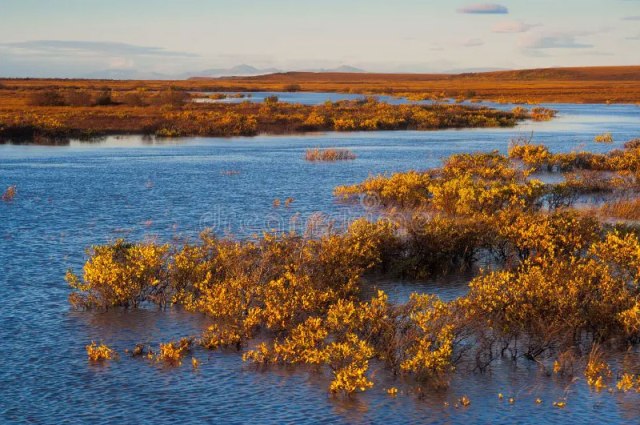
For example, as Arctic lands melt, snow and ice melt, rivers flow faster and wash more organic matter from permafrost and peatlands into the ocean. On the other hand, microscopic phytoplankton floating near the ocean’s surface are increasingly taking advantage of shrinking sea ice to bloom in the newfound open water and sunlight. These plant-like marine organisms capture and absorb atmospheric CO2 through photosynthesis. The ECCO-Darwin model is being used to study this bloom and the connection between ice and life in the Arctic.
Decreasing reflected sunlight in the Arctic is causing local temperatures to rise to unprecedented levels
Satellite data shows that melting Arctic sea ice has reduced the amount of sunlight it reflects, triggering an unprecedented rise in local temperatures. Climate scientists at NASA and NOAA recently reported that 2023 was the hottest year on record, with temperatures continuing to rise at a shocking rate. In the Arctic in particular, temperatures are rising four times faster than the rest of the world, but scientists are unsure what the exact cause of this accelerated warming may be. The study results were published on August 23, 2023, in the journal Nature Scientific Reports.
New satellite data may shed light on this mystery. With permission from the U.S. Space Force, a team of researchers from Sandia National Laboratories analyzed previously unpublished data from radiometers on GPS satellites to better understand the reduced reflectivity of Arctic ice, finding that a decrease in sunlight reflectivity, or albedo, is increasing warming in the Arctic. Data spanning from 2014 to 2019 showed a loss of 20% to 35% in overall reflectivity, the lab said.
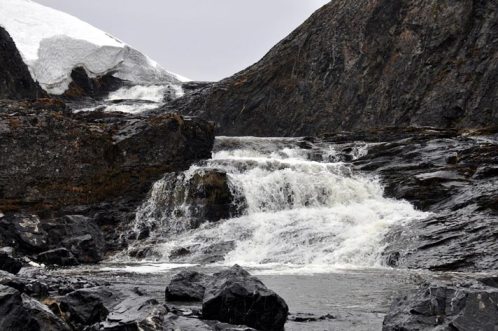
Increased warming in the Arctic is associated with both an overall decline in sea ice and a decrease in the reflectivity of the remaining sea ice. When Arctic sea ice melts, it exposes more of the dark ocean, which in turn absorbs more sunlight than snow-covered ice and raises temperatures. Melting ice also creates what is called pond water, which further breaks down the underlying ice and is not as reflective as snow or ice.
While previous studies have examined local measurements at specific locations and used theoretical discussions of the relationship between albedo and warming in the Arctic, the scientists say this is the first comprehensive, multi-year study of this relationship across the entire region. About one-third of the reflectivity loss is the result of complete melting of the ice, and the remaining two-thirds is likely caused by weathering of remaining sea ice, which tends to be thinner and contain pools of water on its surface, according to the statement.
Monitoring changes in ecosystems in the region
Salmon species vital to the health, culture and food security of many Indigenous communities, as well as to the commercial fishing economy, were changing their numbers. During 2021 and 2022, sockeye salmon, a staple of commercial fishing, reached record highs in Alaska’s Bristol Bay, while Chinook and chum salmon caught by indigenous communities in the Yukon and Kuskokwim rivers fell to record lows.
Chinook and chum salmon numbers have declined due to recent heat and ecosystem changes in the rivers where they spawn and the ocean waters where they reach maturity. Warming river waters have been linked to heat stress in Chinook salmon, and warmer ocean waters may be promoting the maturation of both species into smaller adults.
Buildings and structures in the permafrost zone
Specialists from the Faculty of Geology and Geophysics of Novosibirsk State University (NSU) have developed, patented and presented at the Arctic Technology Forum ARTEK-2023 a technology for express assessment of the condition of buildings and structures for use in the Arctic and areas with permafrost.
“The problem that NSU technology is dedicated to solving is related to the operation of buildings and engineering structures on permafrost soils. The bearing capacity of foundations (in particular, pile and other types of foundations) can be impaired both due to seasonal thawing of soils and due to an increase in the temperature of the foundations due to global warming. If pile foundations lose their load-bearing capacity, buildings and structures may be subject to uneven deformations, which can lead to emergency situations, including collapse,” said Alexander Kvashnin, director of the Center for Technology Transfer and Commercialization of NSU.
In order to be able to quickly make decisions about stopping operation or strengthening foundations, a hardware and software complex was developed for express monitoring of structures and structures. It includes sensors – microseismic sensors that record the frequency and amplitude of vibrations of building structures, and recorders that save this data and can then transfer it either to the cloud or to a laptop if data is processed on site.
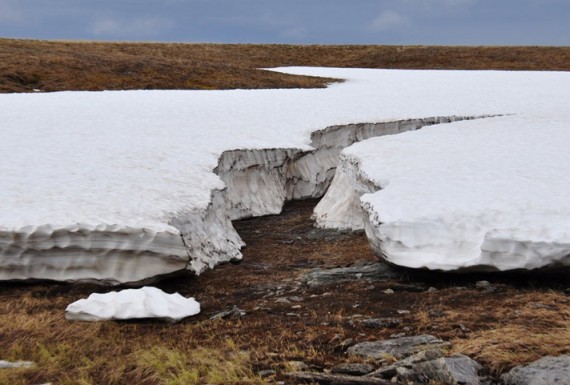
The university notes that an important part of the complex is software that allows you to remove noise, isolate the natural frequencies of vibrations of buildings and structures, and, cutting off all unnecessary things, determine the technical condition of structures and even individual building structures. If the building is in good condition, then the vibration amplitudes should be small, but if stability is lost, then they increase significantly. Based on the frequency and change in these amplitudes over time, one can draw conclusions about the deterioration of the technical condition of the building.
In this way, we examined a number of transport and engineering infrastructure facilities in the Novosibirsk region, as well as at one of the largest metallurgical enterprises in Russia. In a short time, we were able to assess the technical condition of a variety of structures and identify problematic ones among them. The results of our research were 100% confirmed other, more labor-intensive and expensive methods,” said Kvashnin.




